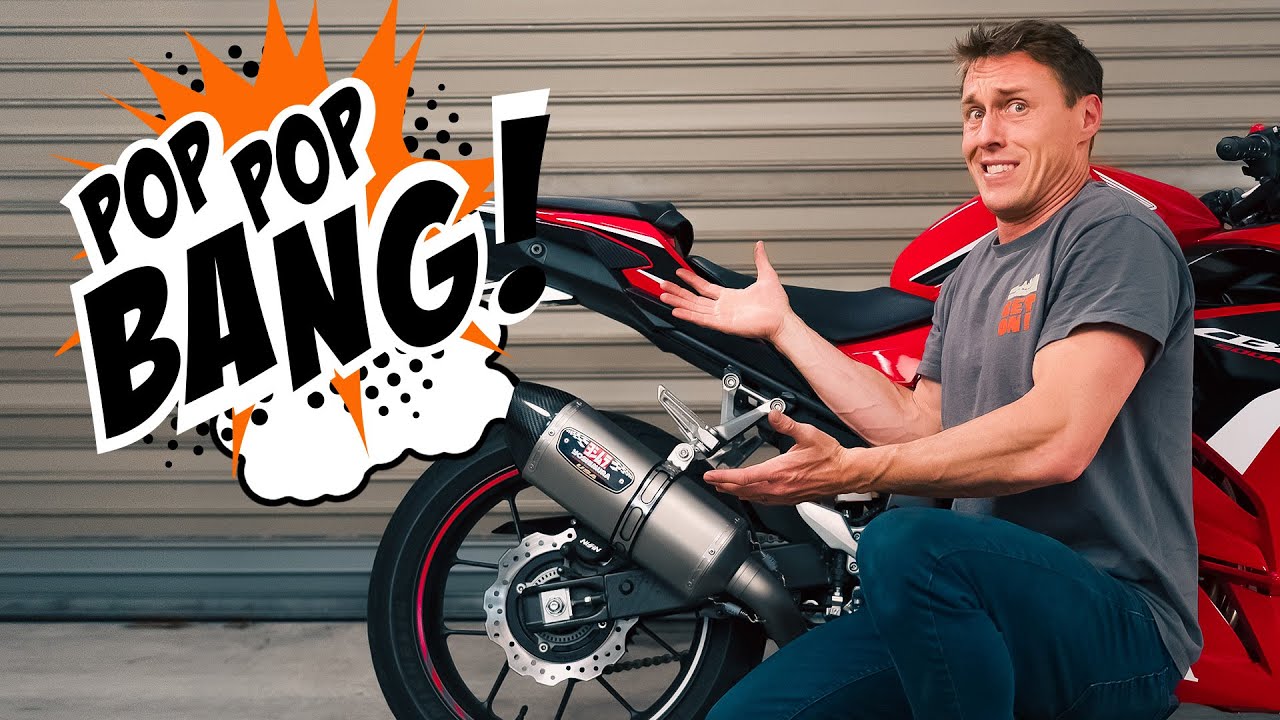Backfiring And Decel Pop — Is It Bad For Your Motorcycle? | The Shop Manual
Unleash Your Creative Genius with MuseMind: Your AI-Powered Content Creation Copilot. Try now! 🚀
In the world of motorcycles, there's a symphony of sounds that can both excite and baffle riders. One of these captivating auditory experiences is the mysterious occurrence of "D cell pops" and "backfires." It's a thrilling sensation for some, but for others, it can be a cause for concern. So, let's delve into this thrilling world of engine acoustics.
The Overture: D Cell Pops
Imagine cruising down the open road, the wind in your face, and the unmistakable roar of your motorcycle. But what's that? A subtle, rhythmic popping sound that feels oddly mesmerizing. You're hearing D cell pops, and here's the exciting part – they are perfectly normal and harmless.
In the realm of motorcycle engines, even the most finely tuned machines will always have some unburned fuel left over after combustion. When this residual fuel mixes with oxygen in the exhaust, it can ignite. This ignition creates those charming D cell pops – a quieter and prolonged stream of verbal snaps and bursts that make your ride sound, well, awesome.
The Crescendo: Backfires
Now, let's turn up the volume a bit and explore the more intense cousin of D cell pops – backfires. These are like the rock stars of engine sounds, resembling gunshots or firecrackers. They're loud, unmistakable, and can send shivers down your spine.
Backfires occur when the air-fuel mixture ignites and explodes back out through the intake. True backfires, in the sense of this explosive phenomenon, are rare and not something you want to encounter. A real backfire can wreak havoc on your engine, potentially blowing off the throttle body and even lighting your air filter on fire. This is why some air filters come equipped with heavy metal screens on the engine side, just in case.
A Dissonant Note: When Backfires Aren't Music
If your bike is producing backfires, it's not time to celebrate; it's time to investigate. Backfires are usually a sign that something is amiss with your bike's tuning. It could be a faulty injector, a clogged carburetor jet, improper ignition timing, cam timing, or even an air leak. Essentially, your bike is crying out for help, and you should listen.
When you hear the thunderous roar of backfires, it's your bike's way of telling you that there's a problem with the air-fuel ratio. Ignoring this warning can lead to serious damage, and no one wants that.
The Encore: Flame-Shooting Motorcycles
Now, let's address the flame-throwing motorcycles that grace the tracks of professional racing. In the world of racing, factors like tailpipe emissions and fuel efficiency take a back seat to raw power and performance. This means that in racing, some fuel flow is maintained even when the throttle is closed. This extra fuel mixes with the wide-open exhaust systems, creating the perfect conditions for a fiery display.
So, if you've ever wondered why you see motorcycles shooting flames like dragons in a medieval tale, it's because racing is all about pushing the limits of horsepower and performance, even if it means a little pyrotechnics.
The Grand Finale
In the world of motorcycles, the engine is not just a piece of machinery; it's a living, breathing entity that communicates with its rider through sound and performance. D cell pops and backfires are like the words in its language, telling stories of its health and vigor.
D cell pops are the gentle whispers of a well-behaved engine, while backfires are the thunderous shouts of an engine in distress. So, the next time you hear those thrilling engine sounds, remember that your motorcycle is talking to you. Listen closely, for it may be sharing a tale of triumph or a plea for help, all while delivering that unmistakable, heart-pounding excitement that only a motorcycle can provide.

Related Recaps
- Salamat Ama sa Kabutihan Mo | Tagalog Christian Song
- Crypto.com IMPORTANT UPDATE FOR CRYPTO HOLDERS! | CRO Coin vs Bitcoin PRICE LEVELS | Crypto NEWS
- Have Arsenal thrown away the EPL title? | WION Sports Xtra
- TÁ NA RODA 12/03/2023 - Nikolas Ferreira, Carlos Jordy, Oscar Maroni e Andréa Sorvetão
- 🚨”MEREÇO ESTAR AQUI” DESTAQUE DO BAHIA NA TEMPORADA FALA SOBRE PERMANÊNCIA.